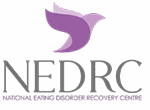The majority of literature surrounding eating disorders for a long time (and some still to this day) has been tailored, designed and intended for females. This also includes what used to be one of the criteria’s to diagnose people with anorexia; the loss of periods. Thankfully in 2017 the DSM V criteria changed and Amenorrhea (the loss of periods) has now been scrapped.
Whilst statistics show that eating disorders like anorexia and bulimia are more common in females, eating difficulties and body dysmorphia, like muscle dysmorphia, have a higher proportion of males to females. In fact, it has been suggested that men make up 50% of those effected by binge eating disorder. Now, statistics may be useful to understand the demographic of eating and body dysmorphia issues however, gender should not be a barrier for people getting help and should definitely not shape the way we see eating and body perception issues.
Gender Inclusivity for Eating Disorders
Studies have already implied that males with eating difficulties and disorders have a higher mortality rate than females. This may be due to the fact that males are confronted with a larger degree of stigma than females, with eating disorders and body dysmorphia portrayed as feminine mental health conditions. Males can also find it more difficult to reach out for help than their female counterparts. It is imperative for all of us to address eating difficulties and body perception difficulties as gender neutral and gender inclusive. That eating disorders are not limited to females by any means, these difficulties do not discriminate so society as a whole needs to see that limiting and marginalising eating difficulties in certain populations is increasing the difficulties faced by people trying to access help.
Muscle Dysphoria
Whilst eating disorders affect men, most apparently (but does not diminish the role of other difficulties), in recent years there has been a rise in men struggling with body dysmorphia, more specifically, muscle dysmorphia. With society pushing out images of males, and lest not forget females, with very muscular physiques as the new “ideal”, many are finding that they are not feeling muscly enough and perceiving themselves as too scrawny despite a very muscly physique. This is a primary distortion in muscle dysmorphia with accompanying behaviours like; excessively exercising, even when having injuries; having disordered eating (maybe focusing on macro-nutrients and protein); being preoccupied by exercise and body physique; having anxiety when they cannot exercise and gain muscle; and steroid abuse. If you would like to hear more here is a video on muscle dysmorphia, the title is off-putting but bear with it as he himself admits the title is not what it should be!
So What Can We Do?
- When talking about eating disorders and body image problems use gender neutral terms
- Be mindful that comments on anyone’s appearance can have a profound impact
- If you notice unhealthy eating or exercise regimes in a relative be mindful that they may be struggling regardless of gender
- If you’re struggling, it’s okay; there is help out there and you are not alone!
If you would like more information – please do not hesitate to get in touch if you have any question or want more information!
Additional Help & Info:
Article of Adam Rippon opening up about his struggles with Anorexia: https://www.nytimes.com/2018/02/13/sports/olympics/figure-skating-adam-rippon.html
Information on Male Eating Disorder:
https://www.nationaleatingdisorders.org/learn/general-information/research-on-males
https://www.theguardian.com/society/2017/jul/31/eating-disorders-in-men-rise-by-70-in-nhs-figures
Muscle Dysmorphia Info:
http://bddfoundation.org/muscle-dysmorphia-body-image-in-men/

